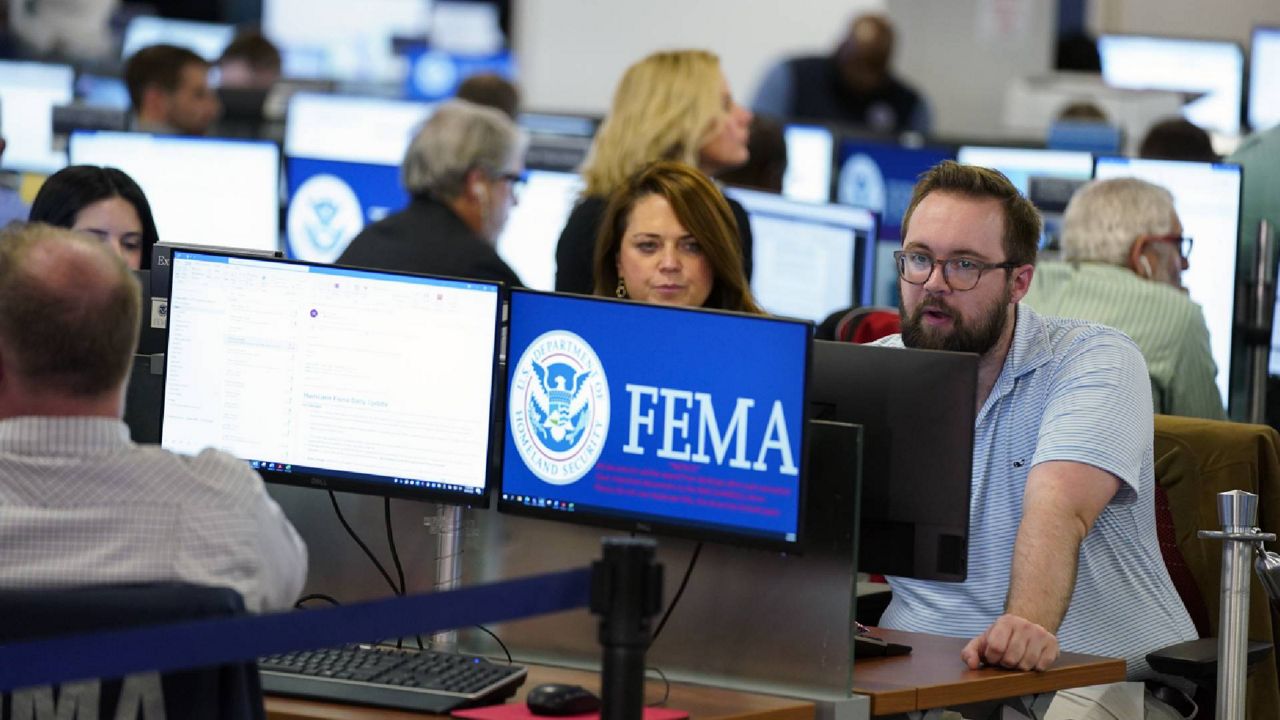As Floridians grapple with Hurricane Ian’s damage to their homes, find temporary places to stay and assess their long-term needs, federal emergency officials say they’ll likely provide aid on the ground for years, not months, and they’re making an effort to ramp up distribution.
Many people seeking money from the Federal Emergency Management Administration (FEMA) report delays — some haven’t heard back from the agency at all, while others say they’ve waited for hours over the phone to work out kinks in their application.
In an interview with Spectrum News, Dr. Melissa Forbes, FEMA’s assistant administrator for response and recovery, urged people to be patient as the agency ramps up its aid for the long haul.
“FEMA will likely be on the ground for years, not weeks or months,” the assistant administrator told Spectrum News. “Even if [folks] haven't seen someone in a FEMA logo yet walking around their neighborhood, more people continue to come.”
FEMA has registered 250,000 Floridians for direct federal aid and approved $75 million as of Thursday morning, Forbes said. Nearly 2,800 staff are on the ground, along with 1,300 other federal personnel.
It depends on the level of your need and where you live, Forbes said.
“It's so frustrating for folks not to necessarily have a defined timeline to expect things after a disaster,” she said. “But it really does depend on the level of a disaster that a survivor has, as well as the location in which they reside.”
Some claims can be paid out more quickly using technology like geospatial imagery to assess damage remotely. Others will take longer because they require an inspector to come out to the site of the damage, to prevent someone from being disqualified due to lack of documentation.
“Some survivors aren't currently staying at their primary residence,” Forbes said. “If they haven't been able to return, then we schedule a time that works best for them.”
A Polk County woman named Ashley told Spectrum News that after helping her mother, Dollmeshia, apply for aid online, the agency’s system told them to call FEMA to sort out incorrect banking information, even though her mom doesn’t have a bank at all.
Her mother waited on the phone for five hours Wednesday before an agent answered, and then promptly hung up.
“How can my mom and others receive the assistance we need if we cannot get through to speak with an agent?” the woman wrote in a message to Spectrum News.
Dollmeshia got through on Thursday after waiting another two hours, even though she called just after the phone line opened at 7 a.m.
Dr. Forbes said “it is always a struggle” to handle the volume of calls at the beginning of a disaster, but she said FEMA has recently gotten additional staff from the Department of Homeland Security and other federal agencies to support call centers.
The wait time for the registration phone line is down to less than 30 minutes as of Thursday morning, she added, though the help line is “taking quite a bit longer.”
Survivors can also check on their aid application at FEMA’s disaster recovery centers, including one in Fort Myers that opened Tuesday at the Lakes Regional Library. Two more were expected to open soon, one in Fort Myers and one in North Port.
Dr. Forbes said the very first step for homeowners who have insurance is getting a quote from their insurance company, since FEMA can’t pay them until they have that number in hand.
“You'll be asked that during your registration,” she said. “If you have home insurance, FEMA will not be able to pay you until you get your insurance settlement or at least a notification from your insurance company on what they will cover.”
“That is the fastest way to expedite your assistance.”
People are eligible for up to $37,900 for home repairs, but actual payments will vary widely. A completely destroyed home could be eligible for the maximum aid, while personal property, cars or other belongings may not be.
People who don’t have home or flood insurance should apply through FEMA for aid, too.
If you had standing water in your home that may be contaminated, or your home is otherwise unlivable, Forbes said people could be eligible for the newly-activated Transitional Sheltering Assistance Program, which provides hotel rooms. The TSA program is also organized through the disaster assistance portal.
People in Charlotte, Collier, DeSoto, Hillsborough, Lee, Manatee, Osceola and Sarasota counties are eligible for the hotel program.
More broadly, residents of Charlotte, Collier, DeSoto, Flagler, Hardee, Hillsborough, Lee, Manatee, Orange, Osceola, Pinellas, Polk, Putnam Seminole, Sarasota, St. Johns and Volusia counties are eligible for direct disaster aid.
Republican Sen. Rick Scott of Florida is pushing for a supplemental aid package from Congress to pay for Florida’s recovery, which is expected to cost billions of dollars. FEMA has not laid out an estimate of its need or a total recovery cost.
Analysts at Fitch Ratings have estimated the insured losses from Hurricane Ian will range from $25 billion to $40 billion dollars.
“The federal government has a big role to play in Florida’s recovery, and the minute that FEMA and our state and local officials determine the true funding needs, we must act,” Scott said, adding that the Senate should come back to Washington from its current break to approve the funding.
This article has been updated to reflect the revised number of disaster recovery centers soon to open in southwest Florida, according to an announcement from FEMA Thursday.



